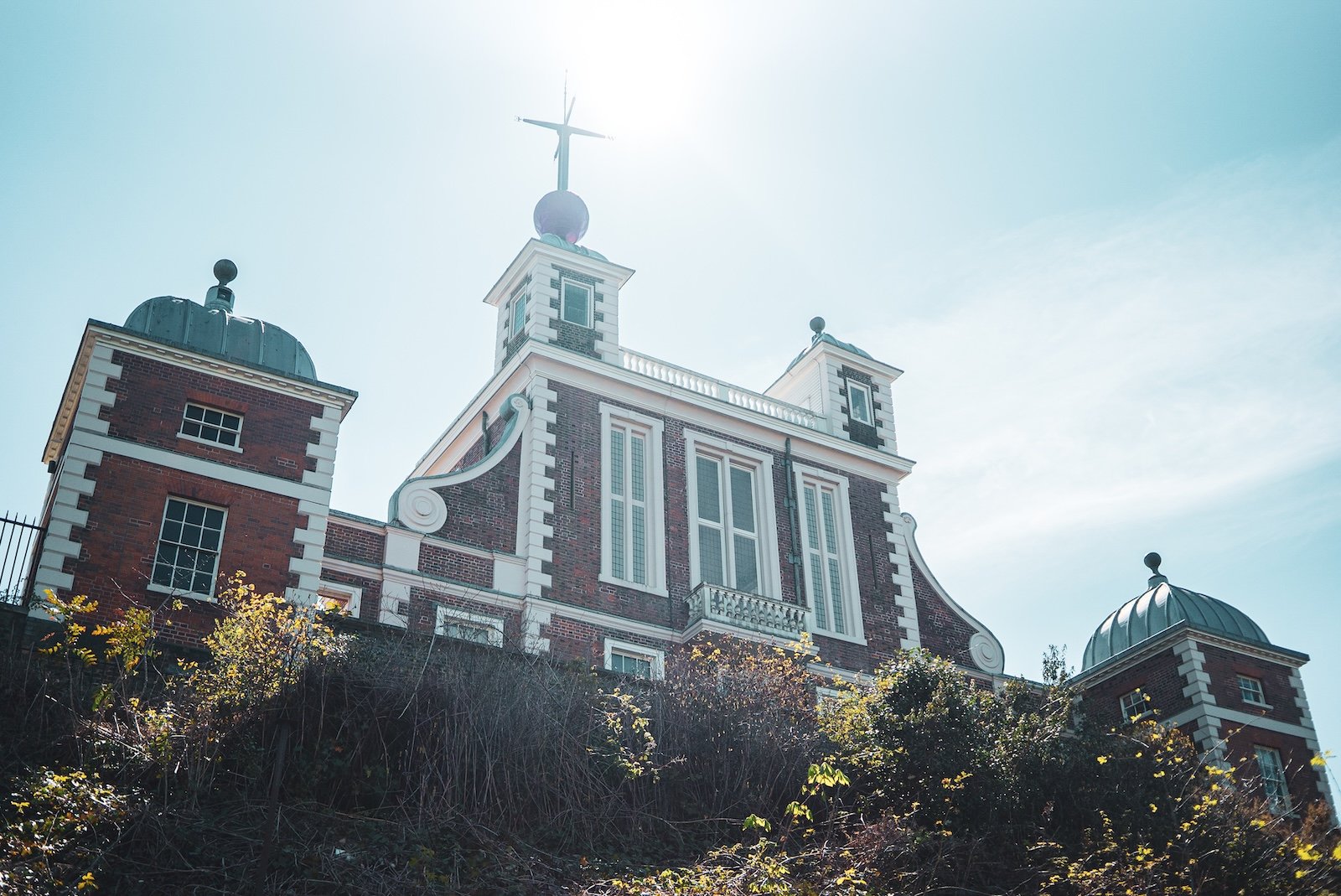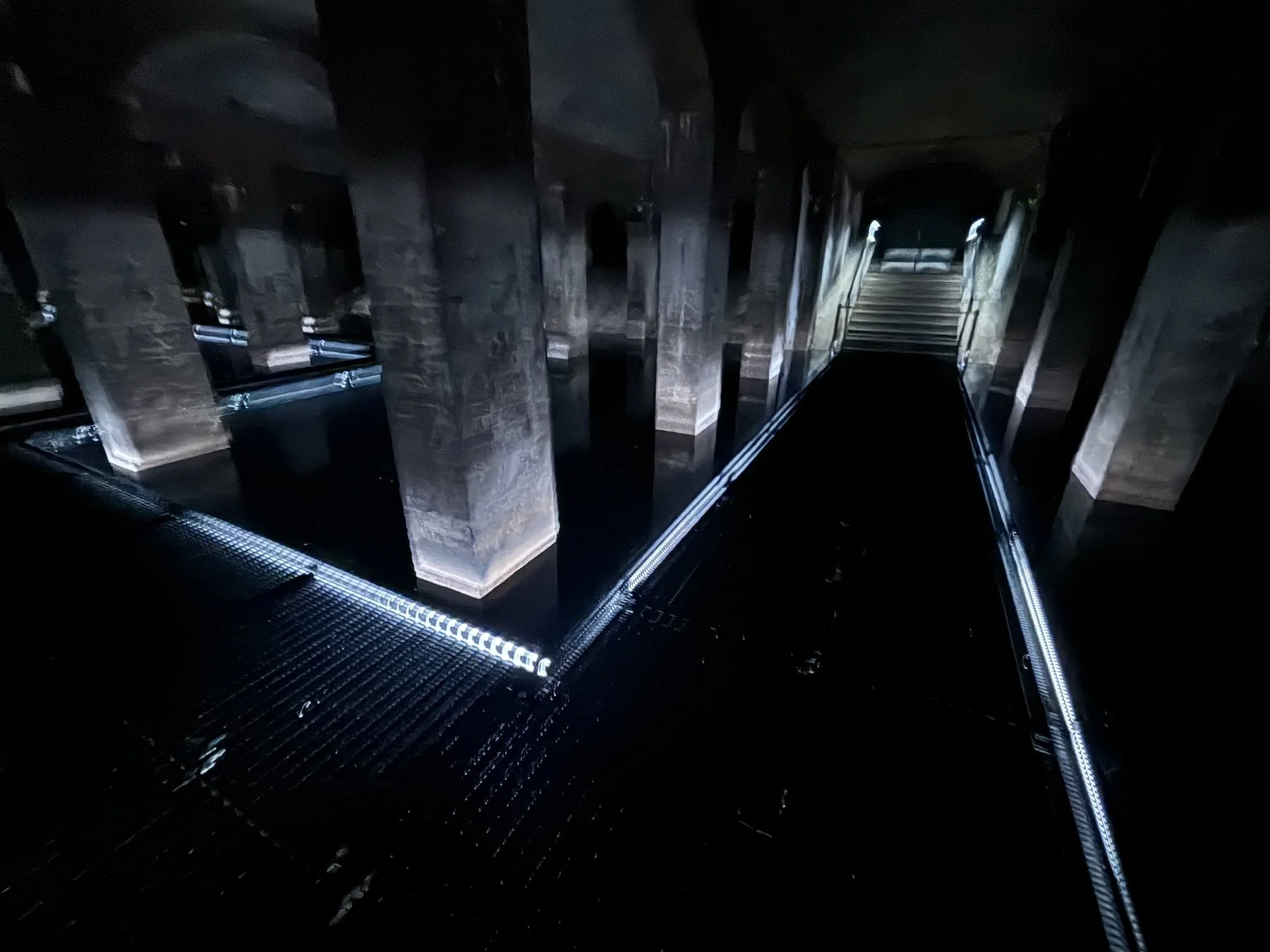Seeing the remarkable Royal Observatory Greenwich in Central London
The Royal Observatory Greenwich, located in London, England, is a historic site of immense scientific significance.

All images by and © Hiatus.Design
Established in 1675 by King Charles II, it served as the home of British astronomy and navigational advancements for centuries. Designed by Sir Christopher Wren, the observatory is perched on a hill in Greenwich Park, offering stunning views of the River Thames and the London skyline.
The observatory is perhaps best known as the location of the Prime Meridian (0° longitude), which serves as the basis for the global system of timekeeping and navigation. The concept of Greenwich Mean Time (GMT), the world’s standard time until the adoption of Coordinated Universal Time (UTC), originated here. Visitors can straddle the Meridian Line, symbolically standing in both the eastern and western hemispheres.
The site features several fascinating attractions, including the Flamsteed House, named after the first Astronomer Royal, John Flamsteed. This historic building now houses exhibits showcasing early timekeeping instruments, telescopes, and celestial maps. The Great Equatorial Telescope, one of the largest of its kind, is also located here and remains a highlight for astronomy enthusiasts.
The Royal Observatory played a crucial role in solving the problem of longitude, a significant challenge for maritime navigation in the 17th and 18th centuries. The development of John Harrison’s marine chronometers, displayed in the observatory's museum, was a groundbreaking achievement that revolutionized navigation.
Another notable feature is the Time Ball, mounted on top of Flamsteed House. Since 1833, the ball has dropped daily at 1:00 PM to signal the correct time to ships on the Thames—a practice that continues today as a nod to tradition.
In addition to its historical and scientific contributions, the observatory is part of the Maritime Greenwich UNESCO World Heritage Site, celebrating its role in shaping global exploration and scientific understanding.
Today, the Royal Observatory Greenwich operates as a museum managed by the Royal Museums Greenwich. It offers interactive exhibits, planetarium shows, and educational programs for visitors of all ages. Whether you're an avid stargazer, a history buff, or simply curious, the Royal Observatory is a must-visit destination that bridges the past, present, and future of astronomy and navigation.
You might also like:
See Prague at its most magical, glide past Charles Bridge, Prague Castle, and more on this golden hour boat tour of the Vltava. History, romance, and river views in under an hour.
Renowned for its intricate Gothic architecture and rich history, the Duomo di Milano, or Milan Cathedral, stands as an iconic symbol of Milan, Italy.
Les Tres Xemeneies (The Three Chimneys) is one of Barcelona’s most distinctive industrial landmarks, which we can’t help but think resemble Bender from Futurama!
Standing in the heart of Andorra la Vella, Salvador Dalí’s Noblesse du Temps (The Nobility of Time) is an iconic bronze sculpture that embodies his fascination with time, dreams, and the surreal nature of existence.
Widely regarded as the birthplace of Western theatre, the Theatre of Dionysus Eleuthereus, located on the southern slope of the Acropolis in Athens, Greece, is one of the most significant cultural landmarks of the ancient world.
Initially established as a study collection for the arts and crafts school, the Design Museum in Helsinki is one of the world’s oldest museums dedicated to design, tracing its origins back to 1873.
Built in the 17th century during the reign of King Christian IV, the Round Tower, or Rundetaarn in Danish, is one of Copenhagen’s most iconic landmarks and a testament to the city’s rich history and architectural ingenuity.
Housed in a historic power station building originally constructed in 1913, the Energy Discovery Centre in Tallinn, Estonia, is an engaging science and technology museum dedicated to exploring the fascinating world of energy, electricity, and physics.
Located in the historic Clementinum complex, the Baroque Library Hall in the Clementinum in Prague is one of the most stunning examples of Baroque architecture and artistry in Europe
Facing the Russian fortress of Ivangorod across the river, Narva Castle, also known as Hermann Castle, stands on the banks of the Narva River in Estonia, marking the easternmost boundary of the European Union.
This immersive ‘Colour of Life’ exhibition at the Royal Łazienki Museum in central Warsaw, offered an intimate glimpse into the life and art of one of the 20th century’s most iconic artists, Frida Kahlo.
Opened in 1989, the Planetarium in Copenhagen is an incredible destination for astronomy and space enthusiasts.
Attending the Robotex International Robotics Festival, held at Tallinn’s Unibet Arena, this year was a fun experience, packed with groundbreaking technology, cool competitions and inspiring ideas!
When we visited the Amox Rex museum, the main exhibition was from Larissa Sansour, a prominent Palestinian-Danish artist whose multidisciplinary work explores themes of identity, memory, and the intersection of politics and culture.
Patarei Prison (‘The Battery’ in English), located in Tallinn, Estonia, is a chilling and historically significant site that reflects the nation’s turbulent history, that we had a chance to tour in winter 2024.
From November 19 to 21, 2024, the Messe Bremen in Germany hosted the SpaceTech Expo Europe, the continent’s largest trade fair dedicated to space technology.
Located in the heart of the city, the MO Museum in Vilnius is a prominent cultural landmark dedicated to modern and contemporary art that’s definitely worth visiting if you’re in the city!
The Belvedere Palace and Gardens in Vienna are a stunning example of Baroque architecture and landscape design, and they play a significant role in the city’s cultural and historical heritage. The complex consists of two magnificent palaces—Upper Belvedere and Lower Belvedere—connected by a vast, meticulously designed garden.
After hearing about a ghostly relic from the last century, we decided to travel to the furthest reaches of Europe to visit a decaying but fascinating former factory located on an island next to the Russian border.
Prague Castle stands as the centrepiece of Prague’s skyline, a majestic complex that embodies centuries of Czech history and architectural splendour.
Often compared to Montmartre in Paris or Freetown Christiania in Copenhagen, Užupis is known for its bohemian spirit, artistic community, and independent character. The district is situated just across the Vilnia River, which separates it from the historic Old Town of Vilnius, making it both central and slightly secluded.
The Universum, located in Bremen, Germany, is a highly interactive science museum that combines learning with highly interactive entertainment – a combination we loved!
Known for its striking architectural design—resembling a metallic whale or a futuristic clam shell (see below)—it captivated us before we even stepped inside.
Shepard Fairey's Photo Synthesis exhibition at Fotografiska Tallinn is a wonderful, intricate and impactful exploration of his artistic journey, running until March 2025.
Despite not featuring a single Banksy original, we were excited to visit an unauthorised Banksy exhibition that’s been touring around Europe since 2021.
The Palace of Culture and Science, known as Pałac Kultury i Nauki (PKiN) in Polish, is a prominent skyscraper in central Warsaw, and one of the city's most iconic landmarks.
The Ennuksemäe Forest Brothers’ bunker is a fascinating historical site located near Viljandi, Estonia. This bunker is significant as it represents the resistance efforts of the Forest Brothers, a group of Estonian partisans who fought against Soviet occupation after World War II.
The Cisterns in Copenhagen, hidden beneath Søndermarken Park, are a fascinating and eerie underground space with a rich history.
Originally constructed in 1856, these massive reservoirs were part of Copenhagen’s first water supply system, designed to store and deliver clean drinking water to the growing city.
Gediminas Tower, an iconic symbol of Vilnius, stands proudly atop Gediminas Hill, overlooking the city with a commanding presence. This historic tower is all that remains of the Upper Castle, which was part of a larger defensive complex built in the early 14th century by Grand Duke Gediminas, the founder of Vilnius.
Dinosaur bones, stunning statues, beautiful paintings, precious rocks, the National Museum in Prague is a fascinating place to absorb culture and history in a this unique part of Europe.
Having spent the last few years exploring Estonia in a tent with a bike, 2024 seemed like a good time to sample and document more of Estonia’s rich history particularly the ample manor houses and castles!
Kernu Manor, is located about 35 kilometres southwest of Tallinn, and a historical gem with a rich past that reflects the country’s aristocratic heritage.
About the Author:
Chris is the founder of Hiatus.Design, a mission-driven branding and website design company that works with clients all over the world.
Over the course of his life, he has travelled to more than 60 countries across six continents, earned two Guinness World Records, completed the legendary Marathon des Sables, summited Mont Blanc and unclimbed peaks in Asia, become a Fellow of the Royal Geographical Society (FRGS), rowed across the Atlantic Ocean and obtained a Masterʼs degree in Business Management (MA).































